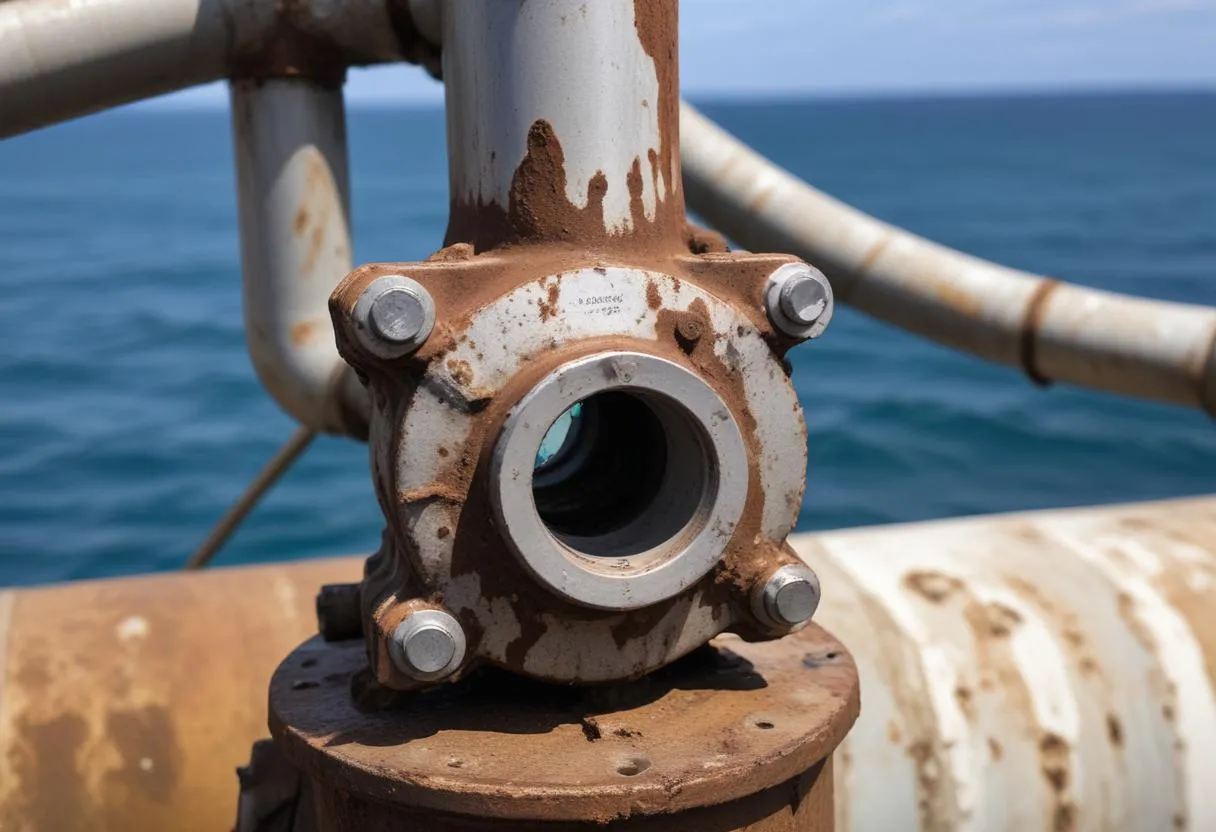 Corrosion in pumps is a critical issue affecting their efficiency, reliability, and lifetime. Various types of corrosion can occur, depending on factors such as the materials used, the chemical nature of the fluid being pumped, and environmental conditions. Understanding these types is fundamental to implementing protective measures and selecting the right materials.
Corrosion in pumps is a critical issue affecting their efficiency, reliability, and lifetime. Various types of corrosion can occur, depending on factors such as the materials used, the chemical nature of the fluid being pumped, and environmental conditions. Understanding these types is fundamental to implementing protective measures and selecting the right materials.
Uniform Corrosion is perhaps the most straightforward type to identify. It occurs evenly across the surface of the pump components, leading to a consistent rate of metal loss. This type of corrosion results from a direct chemical attack by the medium handled and is typically predictable and manageable through material selection and system design.
Pitting Corrosion is more dangerous and insidious. This localized form of corrosion leads to the creation of small holes or pits on the metal surface. The occurrence of pitting can be sporadic and difficult to predict, making it a treacherous risk as it can lead to sudden failures if not detected early. Pitting is often associated with the presence of chlorides in fluids, making stainless steel pumps prone to this type of corrosion in seawater applications.
Crevice Corrosion also occurs in localized areas, most commonly in spaces where oxygen concentration is low, and corrosive fluids can accumulate. Typical locations for crevice corrosion include gasket surfaces, flanges, and under deposits. This form of corrosion is problematic because it can escape detection under seemingly non-corroded parts of the material.
Galvanic Corrosion arises when two dissimilar metals come into contact in the presence of an electrolyte, leading to one metal (anode) corroding faster than it would alone, and the other (cathode) corroding slower. In pumps, this can occur if different metals are used in the construction without appropriate isolation or protective measures.
Erosion Corrosion occurs due to the combined effects of mechanical abrasion and chemical attack. This type can be exacerbated by high velocities, turbulent flow, or suspended solids in the fluid, which enhances the physical wear on the pump materials while they also face chemical degradation.
Corrosion Fatigue happens when the material under cyclic stress is exposed to a corrosive environment. This process accelerates the growth of fatigue cracks, significantly reducing the fatigue life of materials. Pumps operating under variable loads and pressures, especially in corrosive environments, are subject to this type of failure.
- Uniform Corrosion – Characterized by even material surface degradation.
- Pitting Corrosion – Causes small, localized holes leading to potential sudden failures.
- Crevice Corrosion – Forms in low oxygen concentration areas and can remain undetected.
- Galvanic Corrosion – Occurs between two dissimilar metals in the presence of an electrolyte.
- Erosion Corrosion – Results from physical abrasion coupled with chemical attack.
- Corrosion Fatigue – Results from cyclic stress in a corrosive environment.
By understanding each type and assessing vulnerabilities in pump systems, one can develop more targeted corrosion prevention strategies, thereby enhancing the durability and efficiency of pumping systems.
Effective materials and coatings for corrosion resistance
In combating the detrimental effects of corrosion in pump systems, the selection of effective materials and the application of protective coatings emerge as crucial strategies. These materials and coatings are designed to resist the specific chemical and physical challenges posed by the operating environment, thereby extending the operational life and efficiency of pumps.
Stainless Steel is undoubtedly one of the most common materials used due to its wide resistance to corrosion. Various grades of stainless steel, such as 304 or 316, offer differing degrees of corrosion resistance based on their chromium and nickel content. For example, 316 stainless steel contains molybdenum, enhancing its resilience in chloride-rich environments, which is especially beneficial in preventing pitting corrosion.
| Material | Characteristic | Typical Use |
|---|---|---|
| 304 Stainless Steel | General corrosion resistance | Water, mild chemicals |
| 316 Stainless Steel | High corrosion resistance with molybdenum | Seawater, chlorides |
Duplex Stainless Steel, offering even greater strength and corrosion resistance than typical austenitic stainless steels, is suitable for very harsh environments. Duplex grades are particularly effective against erosion corrosion and crevice corrosion.
Alloy Materials such as Hastelloy, Inconel, and Monel feature high nickel and chromium contents, making them ideal for highly corrosive environments or those with high temperatures. These alloys are particularly effective in handling sulfuric acid, hydrochloric acid, and other harsh chemicals.
- Hastelloy – Excellent for strong oxidizers such as ferric and cupric chlorides.
- Inconel – Suitable for high temperature applications with oxidizing acids.
- Monel – Highly resistant to seawater and steam at high temperatures.
For coatings, various options are available that enhance resistance to corrosion beyond the inherent properties of the base material. Epoxy and phenolic coatings are commonly used for their robustness in acidic and alkaline environments. These coatings are applied to internal surfaces of pump components to prevent direct chemical contact with the material.
Ceramic coatings can also be utilized to offer chemical resistance and decrease wear due to their extremely hard surface properties. Additionally, specific coatings such as rubber lining are applied in cases where both chemical and abrasion resistance are required, which may be the case in slurry applications.
Thus, the appropriate selection of corrosion-resistant materials and coatings varies significantly depending on:
- The nature of the fluid (acidic, basic, saline, etc.).
- Operating temperatures and pressures.
- The presence of abrasive particles in the fluid.
In summary, understanding the specific corrosive challenges of the fluids and conditions in pump installations is vital. The right choice of materials and coatings can significantly impact the longevity and efficiency of pump systems, effectively mitigating the risks and costs associated with corrosion.
Maintenance strategies for preventing corrosion in pumps
 To effectively prevent pump corrosion, it’s crucial to adopt comprehensive maintenance strategies tailored to combat the various types of degradation mechanisms identified. Such strategies not only enhance the operational reliability of pump systems but also extend their service life significantly. This section outlines the key maintenance approaches designed to mitigate and manage pump corrosion effectively.
To effectively prevent pump corrosion, it’s crucial to adopt comprehensive maintenance strategies tailored to combat the various types of degradation mechanisms identified. Such strategies not only enhance the operational reliability of pump systems but also extend their service life significantly. This section outlines the key maintenance approaches designed to mitigate and manage pump corrosion effectively.
Regular Cleaning and Inspection are essential first steps in maintaining pump integrity. By ensuring that pump surfaces are free from deposits, sediments, or any foreign materials that could harbor corrosive substances, the likelihood of crevice corrosion and pitting corrosion is markedly reduced. Scheduled inspections help in the early detection of potential issues, allowing for timely corrective measures before significant damage occurs.
- Visual inspections to identify signs of corrosion such as discoloration or pitting.
- Ultrasonic testing to measure wall thickness and detect hidden flaws beneath the surface.
- Regular cleaning to remove harmful deposits and prevent material buildup.
Anodic Protection, a form of cathodic protection, involves making the entire pump a cathode within an electrochemical cell. This is achieved by attaching a more easily corroded “sacrificial” anode to the pump, which corrodes instead of the pump material. This technique is particularly effective in managing galvanic corrosion in heterogeneous metal environments.
Use of Inhibitors adds another layer of defense. Chemical inhibitors can be introduced into the fluid medium to reduce its corrosiveness. They work by forming a passive layer on the metal surface, which slows down the rate of corrosion. These inhibitors are often used in environments where adjusting pH or other fluid properties is feasible to mitigate corrosive effects.
Control of Operating Conditions is also pivotal. Corrosion rates can accelerate under certain physical conditions such as temperature and fluid velocity. By optimizing these parameters within safe operating limits, the impact of erosion corrosion and corrosion fatigue can be substantially minimized.
- Maintaining moderate fluid velocities to reduce erosive forces.
- Monitoring and controlling temperatures to avoid extreme conditions that hasten corrosion.
- Ensuring consistent operational pressures to prevent stress-related material degradation.
Replacement and Upgrades of pump components with corrosion-resistant materials and better designs should be considered as part of a comprehensive maintenance schedule. Implementing upgraded materials or even changing out worn parts not only refreshes the system but also incorporates more recent advancements in corrosion resistance technology.
Finally, investing in training for maintenance personnel is invaluable. Educating teams on the importance of corrosion prevention and the specific maintenance practices for different types of corrosion can lead to more effective long-term management of pump systems.
Incorporating these maintenance strategies ensures that the onset and progression of corrosion in pumps are effectively checked, fostering a more reliable and durable pump system.